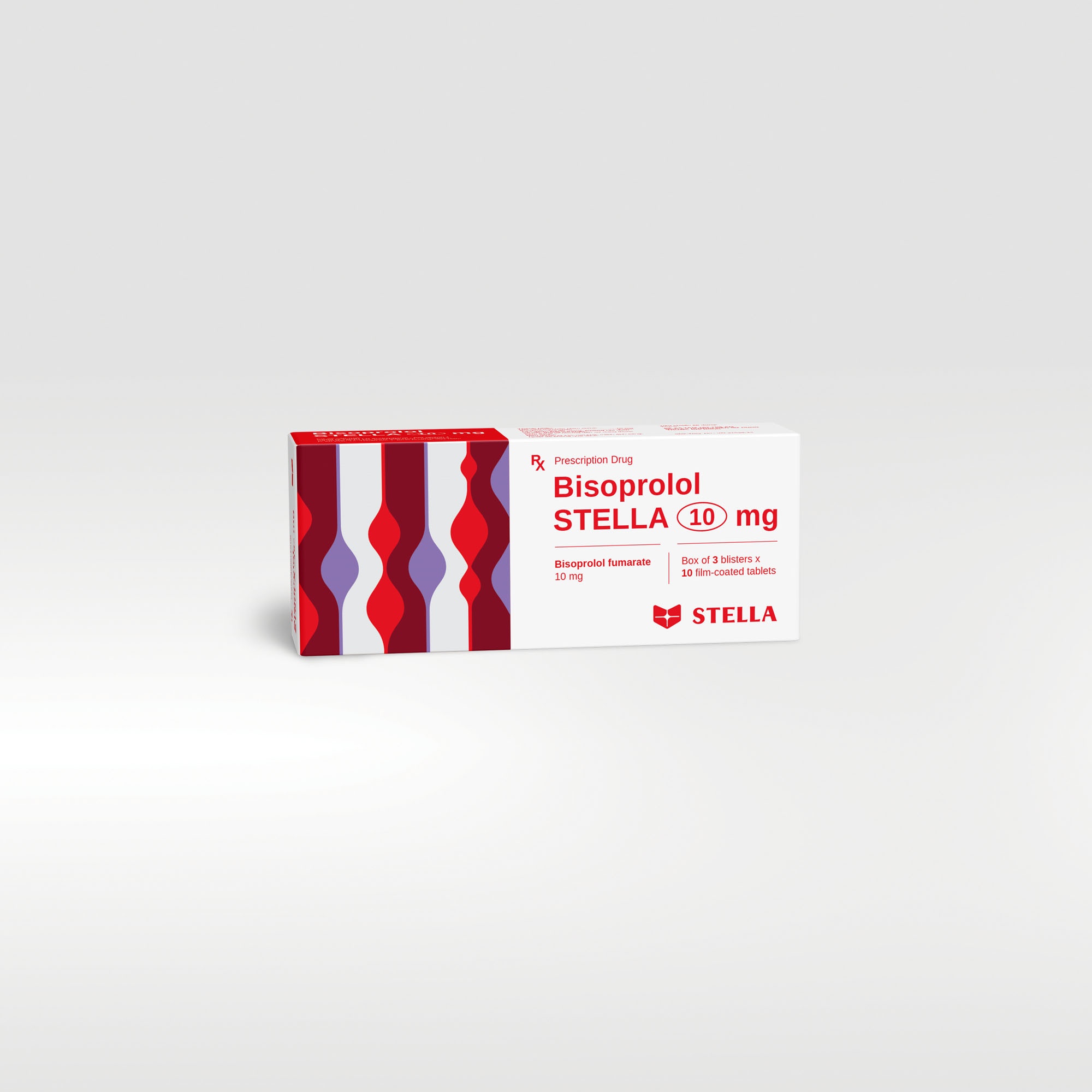Indications
- Management of hypertension and angina pectoris.
- It is also used as an adjunct to standard therapy in patients with stable chronic heart failure.
Dosage
Hypertension or angina pectoris
- Adults
The dosage should be individually adjusted, in particular according to the pulse rate and therapeutic success.
It is recommended to start with 5 mg per day. The usual dose is 10 mg once daily with a maximum recommended dose of 20 mg once daily.
- Elderly
Start with the lowest possible dose.
- Renal or hepatic impairment
In patients with liver or kidney function disorders of mild to moderate severity, no dosage adjustment is normally required.
In patients with severe renal impairment (creatinine clearance < 20 ml/min) and in patients with severe liver function disorders it is recommended that a daily dose of 10 mg is not exceeded.
Experience with the use of bisoprolol in renal dialysis patients is limited. However, there is no evidence that the dosage regime needs to be altered.
Discontinuation of treatment: Treatment must not be stopped abruptly. The dosage should be diminished slowly by a weekly halving of the dose.
Stable chronic heart failure
- Standard treatment of CHF consists of an ACE inhibitor (or an angiotensin receptor blocker in case of intolerance to ACE inhibitors), a beta-blocking agent, diuretics, and when appropriate cardiac glycosides. Patients should be stable (without acute failure) when bisoprolol treatment is initiated.
It is recommended that the treating physician should be experienced in the management of chronic heart failure.
- Titration phase:
The treatment of stable chronic heart failure with bisoprolol requires a titration phase.
The treatment with bisoprolol is to be started with a gradual uptitration according to the following steps:
1.25 mg once daily for 1 week, if well tolerated increase to.
2.5 mg once daily for a further week, if well tolerated increase to.
3.75 mg once daily for a further week, if well tolerated increase to.
5 mg once daily for the 4 following weeks, if well tolerated increase to.
7.5 mg once daily for the 4 following weeks, if well tolerated increase to.
10 mg once daily for the maintenance therapy.
The maximum recommended dose is 10 mg once daily.
Transient worsening of heart failure, hypotension, or bradycardia may occur during the titration period and thereafter.
Close monitoring of vital signs (heart rate, blood pressure) and symptoms of worsening heart failure is recommended during the titration phase. Symptoms may already occur within the first day after initiating the therapy.
- Treatment modification:
If the maximum recommended dose is not well tolerated, gradual dose reduction may be considered.
In case of transient worsening of heart failure, hypotension, or bradycardia reconsideration of the dosage of the concomitant medication is recommended. It may also be necessary to temporarily lower the dose of bisoprolol or to consider discontinuation.
The reintroduction and/or uptitration of bisoprolol should always be considered when the patient becomes stable again.
- Duration of treatment:
Treatment of stable chronic heart failure with bisoprolol is generally a long-term treatment.
The treatment with bisoprolol must not be stopped abruptly since this might lead to a transitory worsening of condition.
Especially in patients with ischaemic heart disease, treatment must not be discontinued suddenly. Gradual reduction of the daily dose is recommended.
- Special population:
Renal or hepatic impairment: There is no information regarding pharmacokinetics of bisoprolol in patients with chronic heart failure and with impaired liver or renal function. Uptitration of the dose in these populations should therefore be made with additional caution.
Elderly: No dosage adjustment is required.
Paediatric population: There is no experience with bisoprolol in children and adolescents, therefore its use cannot be recommended for children.
Usage
- Bisoprolol STELLA 10 mg is only administered orally.
- Bisoprolol should be taken in the morning and can be taken with food.
- They should be swallowed with liquid and should not be chewed.












